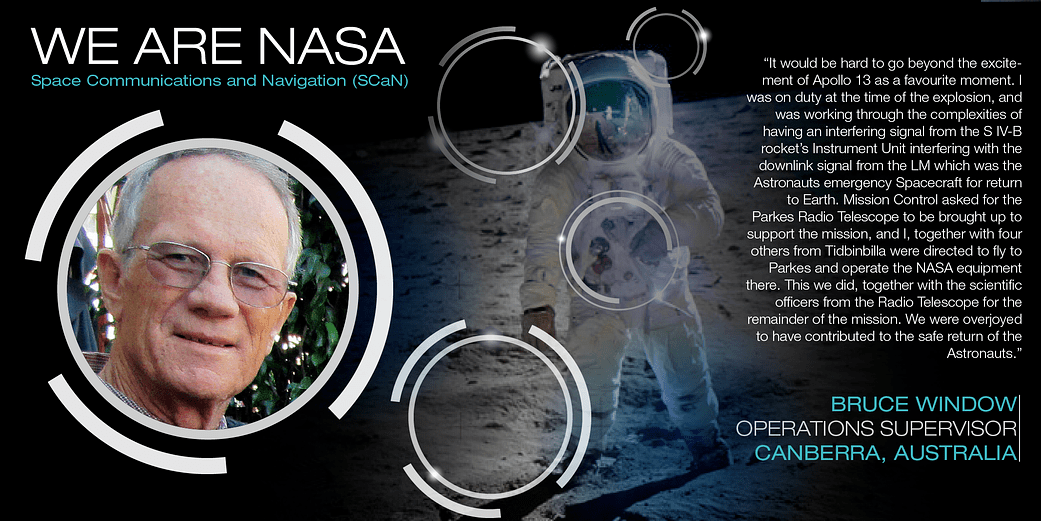Tell us more about your role during the Apollo mission.I was employed as a contractor at Tidbinbilla from 1965 to 1975, and for all but the first six months, I was an operations supervisor in charge of a shift period at the [Deep Space Communications Complex]. During the Apollo period covering Apollo 6 through Apollo 17, I was a USB supervisor at Tidbinbilla, which supported the Prime Australian Apollo site at Honeysuckle Creek. As a USB supervisor, I was in charge of a shift of approximately 11 technicians who operated the Manned Space Flight Network (MSFN) receiving and transmitting equipment under the direction of Honeysuckle Creek operations management to implement Houston’s mission instructions. When the Apollo Missions concluded, I took the role of operations supervisor of Deep Space Station (DSS)-43 for the period of a shift.What was your favorite moment from the Apollo program?It would be hard to go beyond the excitement of Apollo 13 as a favorite moment. I was on duty at the time of the explosion and was working through the complexities of having an interfering signal from the S IV-B rocket’s instrument unit interfering with the down link signal from the Apollo Lunar Module, which was the astronauts’ emergency spacecraft for return to Earth. Mission control asked for the Parkes Radio Telescope to be brought up to support the mission, and I, together with four others from Tidbinbilla, were directed to fly to Parkes and operate the NASA equipment there. This we did, together with the scientific officers from the Radio Telescope, for the remainder of the mission. We were overjoyed to have contributed to the safe return of the astronauts.How did your work with NASA impact your career?I think that it gave me great management experience, which I was able to employ with my future work in the Australian Public Service and with IBM.How did the Apollo program set the precedence for future human exploration?I believe that having the goal of sending men to the Moon developed a successfully close relationship between NASA and industry, which can be emulated by any nation [that] wants to explore outside the confines of the Earth.
Learn more about how we are going forward to the Moon and Mars with the Artemis program.



























